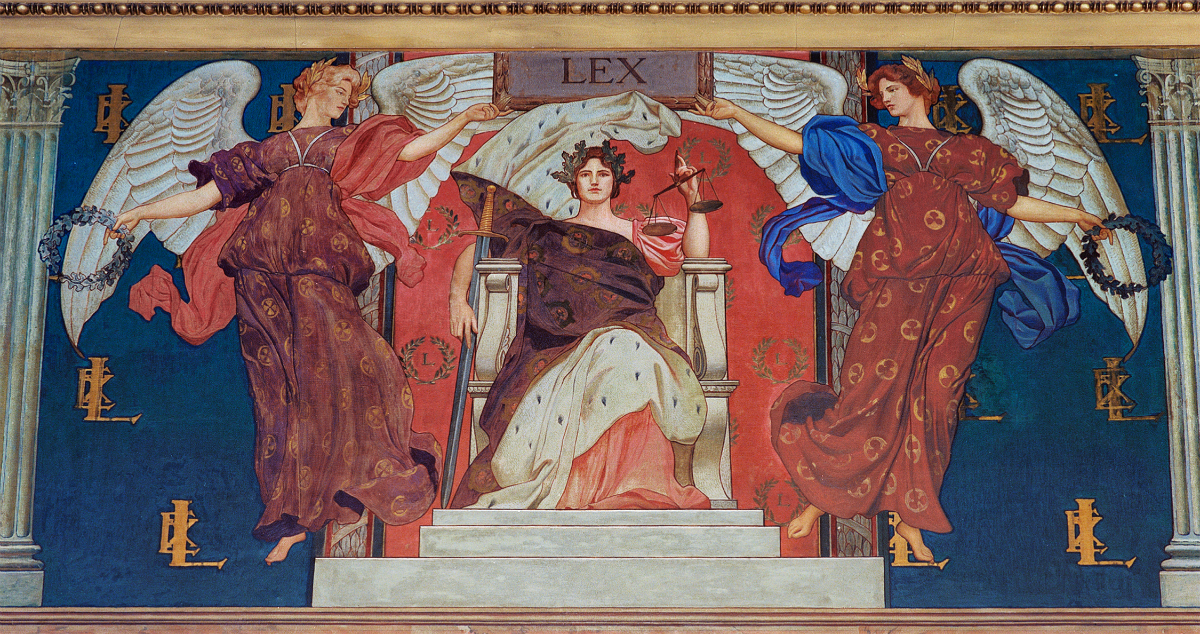Imagine you go to your job every day in a beautiful office surrounded by stunning portraits of people you know nothing about. Imagine these watching eyes as spectators of your and your colleagues’ work. Imagine wondering about who these people were and what they must have done to get their portraits painted.
Now imagine your office is the Court of Appeals Hall in Albany, New York.
For Chief Judge Judith S. Kaye and Associate Judge Albert M. Rosenblatt, this wasn’t an exercise in imagination; they actually were surrounded by portraits of judges they didn’t know and books with annotations written in past judges’ hands. However, there was little information at the Court of Appeals about who the judges had been or what they had done. This caused the two to think critically about the history of the Judiciary in the State of New York and how that history could be preserved and shared.
“Al Rosenblatt, wonderfully curious, endlessly, boundlessly curious person that he is, he and I would often talk about these things…” recounts Judge Kaye in her Oral History, recorded for the Historical Society in 2011. “Once Judge Rosenblatt is interested in something, beware, because he will take it to its very depths. Over the years, over the next years, he began…learning more and more and more about the Judges. Eventually of course, there was that wonderful book published [by the Historical Society of the New York Courts], more than a thousand pages on Judges of the Court of Appeals… There we were, digging into the history of the Court of Appeals, and then the interest broadened and broadened, as justifiably it should have, to the court system in the State of New York. We have a great history and a great heritage, so with our extraordinary – I don’t know what to call her, librarian, another person boundlessly curious and very scholarly and marvelous at research and everything else, Frances Murray [Chief Legal Reference Attorney of the Court of Appeals]… joined forces with Judge Rosenblatt and me, and we were sort of rolling along until we [found] Marilyn [Marcus, Executive Director]… and got structure and organization and boy, has this ever taken off.” (Judge Kaye’s Oral History 2011, page 32-33.)
The element of investigation and detective work appealed to Sherlock Holmes Society member, Judge Rosenblatt. For the 150th anniversary of the Court of Appeals, Judge Rosenblatt was tasked with locating an image of Chief Judge Charles Ruggles, who presided in the 1850s, to recreate the only missing portrait in the collection. After exhausting many sources, Judge Rosenblatt found a daguerreotype that featured Judge Ruggles. The small daguerreotype was then painted into a portrait with the help of a commission by philanthropist Jack Gartland.
In Judge Rosenblatt’s recollection, “I look at Ruggles and I think, wow there he is. He’s now there and that may have been the start of my passionate interest in the history of the Court – because I would, once in a while, look around the courtroom really in awe of some of these predecessors and I thought, who are these people? They must have been pretty good people. And they didn’t get to the New York Court of Appeals by accident. And I asked the Chief [Judge Judith S. Kaye] what we know about these people. And we began with an inventory. And we found this dusty old loose leaf book where there were fragmentary accounts of probably 80% of the former Judges. And I thought well, Judith, what do you think? – Would you help me if I wrote a history of the Court and all these people? And so it began… I think that’s what got us started in forming the Historical Society of the Courts. The Chief and I felt that we want to preserve a lot of these events and somehow chronicle, our history because it’s rich and it’s exciting.” (Judge Rosenblatt’s Oral History 2009, page 50-55).
Because of the passion of these two individuals and everyone else who was active in founding the Society, we are able to preserve information about the Judiciary today. This preservation includes oral histories of judges, though many are not public, you can still hear from Judge Kaye, Judge Rosenblatt, and many others in our About the Society video; public programs, including the Judge Judith S. Kaye Program, which will have its inaugural session of Conversations on Women and the Law this December; and our publications, such as Judicial Notice which gives our members an opportunity to highlight their legal history interests and passions.
However, we cannot fulfill our mission of preserving, protecting, and promoting the legal history of New York without the help of our members, so join today and know that your donation goes toward funding our vital work, sharing our legal history with the citizens of today and of the future.

